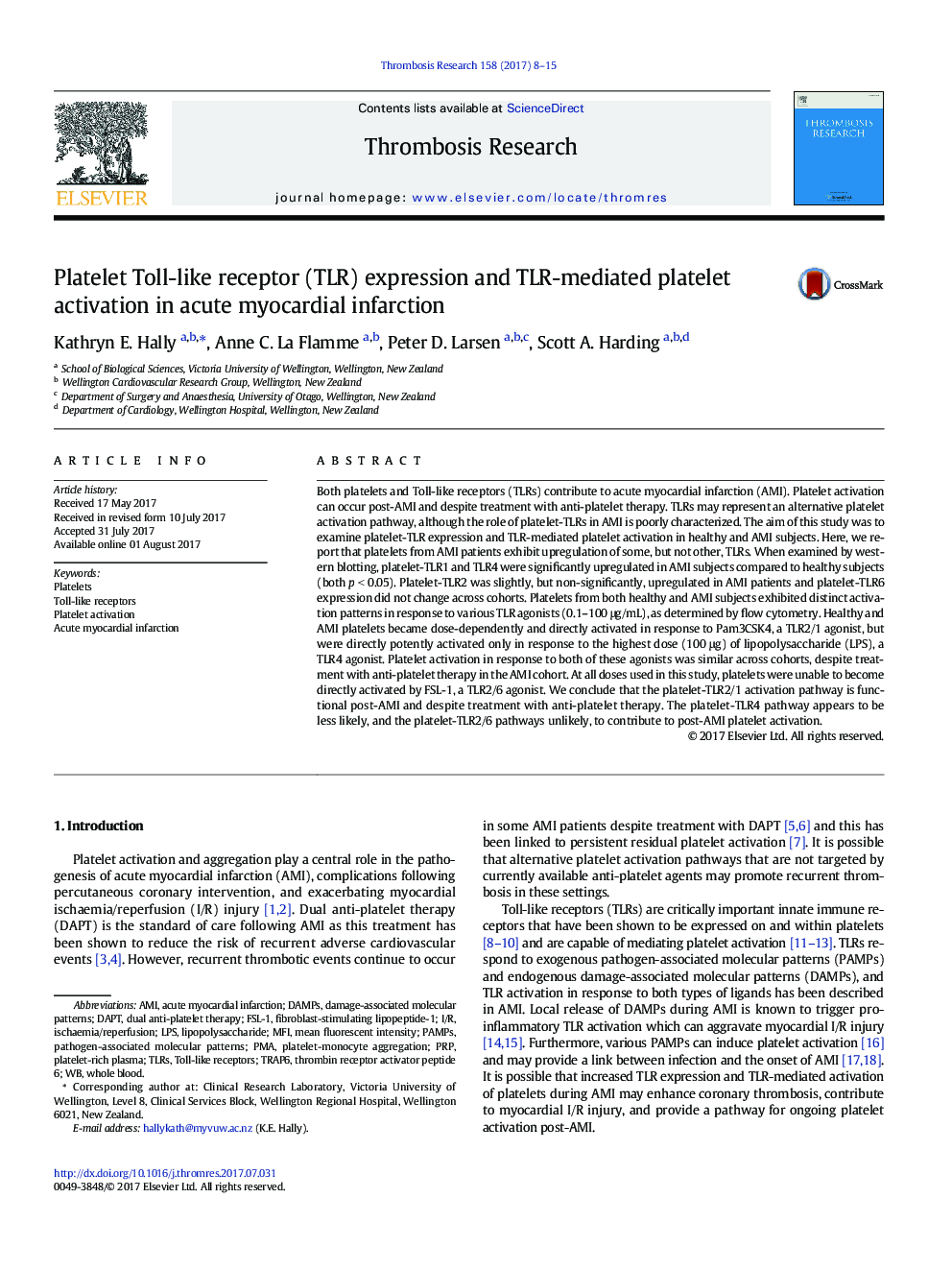| کد مقاله | کد نشریه | سال انتشار | مقاله انگلیسی | نسخه تمام متن |
|---|---|---|---|---|
| 5621785 | 1579185 | 2017 | 8 صفحه PDF | دانلود رایگان |

- Platelets and Toll-like receptors (TLRs) contribute to acute myocardial infarction.
- Compared to healthy subjects, platelet-TLR1 and TLR4 are upregulated in AMI.
- AMI platelets exhibit distinct activation patterns in response to TLR agonists.
- Platelet activation occurred despite treatment with anti-platelet therapy.
- Some platelet-TLR pathways may contribute to post-AMI platelet activation.
Both platelets and Toll-like receptors (TLRs) contribute to acute myocardial infarction (AMI). Platelet activation can occur post-AMI and despite treatment with anti-platelet therapy. TLRs may represent an alternative platelet activation pathway, although the role of platelet-TLRs in AMI is poorly characterized. The aim of this study was to examine platelet-TLR expression and TLR-mediated platelet activation in healthy and AMI subjects. Here, we report that platelets from AMI patients exhibit upregulation of some, but not other, TLRs. When examined by western blotting, platelet-TLR1 and TLR4 were significantly upregulated in AMI subjects compared to healthy subjects (both p < 0.05). Platelet-TLR2 was slightly, but non-significantly, upregulated in AMI patients and platelet-TLR6 expression did not change across cohorts. Platelets from both healthy and AMI subjects exhibited distinct activation patterns in response to various TLR agonists (0.1-100 μg/mL), as determined by flow cytometry. Healthy and AMI platelets became dose-dependently and directly activated in response to Pam3CSK4, a TLR2/1 agonist, but were directly potently activated only in response to the highest dose (100 μg) of lipopolysaccharide (LPS), a TLR4 agonist. Platelet activation in response to both of these agonists was similar across cohorts, despite treatment with anti-platelet therapy in the AMI cohort. At all doses used in this study, platelets were unable to become directly activated by FSL-1, a TLR2/6 agonist. We conclude that the platelet-TLR2/1 activation pathway is functional post-AMI and despite treatment with anti-platelet therapy. The platelet-TLR4 pathway appears to be less likely, and the platelet-TLR2/6 pathways unlikely, to contribute to post-AMI platelet activation.
Journal: Thrombosis Research - Volume 158, October 2017, Pages 8-15